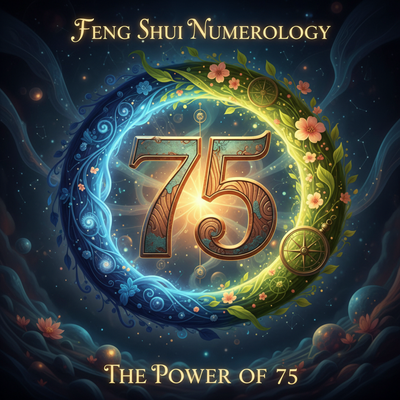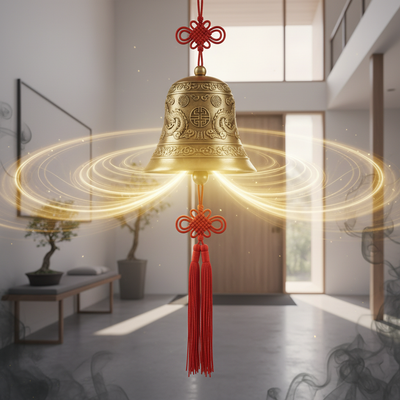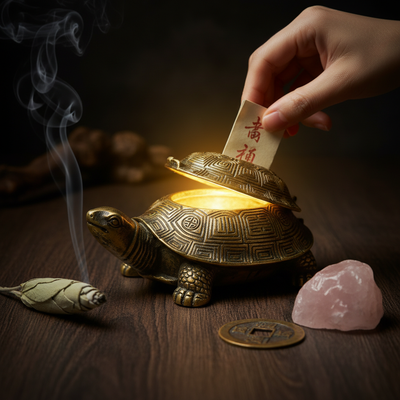Introduction: The Life Force Inside You

Have you ever had a day where you felt completely "in the zone"—easily productive, clear-minded, and full of energy? On the other hand, have you experienced times of feeling totally drained, foggy, and stuck, where even simple tasks feel huge? These common human experiences are perfect examples of what Traditional Chinese Medicine (TCM) calls the qi flow.
Simply put, qi is the life force energy that brings all living things to life. It is the invisible current that powers every function in your body, from breathing and thinking to digesting and moving. The qi flow, therefore, is the active movement of this energy through specific pathways in your body. Think of it like a river system feeding a landscape. When the river flows freely, the land is fertile, vibrant, and thriving. If the river becomes blocked or dammed, it leads to stagnation, flooding in some areas, and drought in others. In the same way, a smooth, abundant qi flow results in health, while a blocked or weak flow leads to illness and discomfort. This guide will explain this ancient concept, showing you what qi is, how to recognize its state, what blocks it, and most importantly, how to build a powerful, clear flow for a more vibrant life.
Understanding Qi: More Than Just Energy
While often translated simply as "energy," qi is a much more complex and foundational concept in the complete system of Traditional Chinese Medicine. It's not a single substance but a range of vital forces with distinct and critical functions. To truly understand the importance of the qi flow, we must first appreciate what this energy is responsible for within our bodies. In TCM, qi is the master commander that controls all body processes.
Its primary functions can be understood through six key actions:
- Transformation: This is the function of changing one substance into another. The most basic example is the Spleen qi transforming the food and drink we consume into nourishment and energy that the body can use.
- Transportation: Qi is the force that moves things. It transports blood, body fluids, and vital substances to every cell, tissue, and organ, ensuring they receive the nourishment they need to function.
- Holding: This is the containing function of qi. It is responsible for holding organs in their proper place, keeping blood within the vessels, and preventing the leakage of bodily fluids like sweat and urine.
- Raising: A specific aspect of the holding function, raising qi maintains the body's upright structure. It prevents the downward collapse or prolapse of organs, a condition often associated with Spleen qi deficiency.
- Protecting: Known as Wei Qi, this is the protective aspect of qi that flows on the surface of the body. It acts as our first line of defense against external pathogens like viruses and bacteria, similar to the immune system.
- Warming: Qi is the source of the body's heat. The warming function, primarily controlled by Kidney qi, is responsible for maintaining a stable and healthy body temperature, which is essential for all metabolic activities.
This complex network of energy travels along specific channels called meridians, which act as the highways for qi flow, connecting the exterior of the body with the internal organs.
Are You in Flow?
Understanding the theory is one thing; recognizing the state of your own qi is another. Moving from the abstract to the real is the first step toward taking control of your health. Your body provides constant feedback on the quality and movement of your internal energy. By learning to interpret these signals, you can gain deep insight into your well-being. Here's what you might feel or notice when your qi is either flowing smoothly or experiencing blockage.
Signs of Healthy Qi Flow
When your qi is abundant and moving without obstruction, you experience a state of dynamic balance. This isn't a hyperactive, caffeinated buzz but a steady, resilient vitality. The signs are often characterized by what you don't experience—an absence of chronic complaints and a feeling of ease in your body and mind.
- Consistent energy throughout the day, without significant afternoon slumps or reliance on stimulants.
- A clear, focused mind and the ability to concentrate effectively.
- A strong immune system, meaning you don't catch every cold that goes around.
- A generally positive mood and the emotional strength to handle daily stressors without becoming overwhelmed.
- The ability to fall asleep easily and wake feeling refreshed.
- Smooth, efficient digestion without bloating, gas, or discomfort.
- A feeling of physical ease and flexibility in your body.
Symptoms of Blocked Qi
When the qi flow is blocked, it creates a condition known as Qi Stagnation. This is one of the most common patterns seen in clinical practice today. The energy gets "stuck," much like a traffic jam. This blockage can show up in a wide array of physical and emotional symptoms.
-
Physical Symptoms:
- Chronic pain that is often dull, achy, or moves around the body.
- Tension and tightness, especially in the neck, shoulders, and upper back.
- A feeling of a lump in the throat or difficulty swallowing.
- Frequent, involuntary sighing as the body instinctively tries to move stuck energy.
- Tension headaches or migraines.
- Digestive issues such as bloating, abdominal distention, and irregular bowel movements.
- For women, premenstrual symptoms (PMS) like breast tenderness, irritability, and cramps are classic signs of Liver Qi Stagnation.
- Cold hands and feet, as the stuck qi fails to warm the extremities.
-
Emotional Symptoms:
- Irritability, frustration, and a short temper.
- Pronounced mood swings.
- A pervasive feeling of being "stuck" in life, indecisive, or unmotivated.
- Feelings of depression or a low-grade, persistent unhappiness.
- Anxiety and a sense of unease or being on edge.

Recognizing these patterns in yourself is not a cause for alarm but a powerful act of self-awareness. It's the diagnostic first step on the path to restoring your natural, vibrant flow.
The Modern Enemies of Qi
The principles of qi flow are thousands of years old, but the challenges that disrupt it are distinctly modern. While ancient texts warned against overwork and emotional turmoil, they could not have predicted the unique pressures of the 21st century. Understanding how our contemporary lifestyle directly impacts and sabotages our internal energy is crucial for finding effective solutions. Let's analyze the primary modern culprits that block the qi flow.
The Digital Drain
Our constant engagement with screens—smartphones, laptops, and televisions—is a primary source of qi depletion. In TCM, the Liver "opens to the eyes." Prolonged screen time and the processing of endless information streams over-tax the Liver's qi and blood. This leads to common symptoms like dry eyes, blurry vision, and floaters. Furthermore, the constant mental stimulation and exposure to blue light agitate the Heart qi, which houses the Shen (our spirit and consciousness). This agitation makes it difficult to quiet the mind, leading to anxiety, mental restlessness, and disturbed sleep, which in turn prevents the body from adequately restoring its qi overnight.
Sedentary Stagnation
The "desk-bound" life is a formula for stagnation. Our bodies are designed to move. When we sit for hours on end, we physically compress the meridians, especially in the hips, lower back, and legs. This constriction literally creates a dam, obstructing the smooth flow of qi and blood to the lower half of the body. This is a primary cause of lower back pain, hip tension, sciatica, and varicose veins. From a TCM perspective, prolonged sitting also weakens the Spleen qi. The Spleen governs the muscles, and a lack of movement leads to muscle weakness and fatigue. This creates a vicious cycle: weak Spleen qi leads to fatigue, which makes us want to sit more, further stagnating the flow.
The Stress-Snacking Cycle
Modern food culture and chronic stress create a perfect storm for digestive disharmony. The Spleen, responsible for transforming food into qi, functions best with warmth and regularity. When we are stressed, we often reach for convenience foods, which are frequently processed, sugary, or greasy. We eat erratically, at our desks, or late at night. Consuming cold foods and drinks (like iced lattes and salads) forces the Spleen to expend extra qi just to warm them up to body temperature before digestion can even begin. This weakens the Spleen's transformative function, leading to a condition called "dampness"—a pathological fluid that clogs the system, causing bloating, heaviness, brain fog, and sluggishness.
Emotional Repression
Perhaps the most potent saboteur of all is unexpressed emotion. In a culture that often encourages us to "be strong" and push through our feelings, we become experts at emotional repression. From a TCM standpoint, the Liver is responsible for ensuring the smooth, harmonious flow of qi throughout the entire body. The emotion most directly linked to the Liver is anger, but this also includes its variations: frustration, resentment, irritation, and bitterness. When these emotions are not processed and released, they cause the Liver's function to seize up, leading to Liver Qi Stagnation. This is the root of many of the symptoms listed earlier, from tension headaches and irritability to digestive upset and PMS. The common phrase "I'm fine," when we are not, is a powerful incantation for blocking the qi flow.
A Practical Toolkit to Restore Qi
Understanding the blockages is the first half of the journey. The second, more empowering half is learning how to actively clear them. Restoring and enhancing your qi flow doesn't require a complete life overhaul. It involves incorporating simple, consistent practices that signal to your body that it's time to move, release, and rebalance. This toolkit offers a variety of approaches, allowing you to choose what resonates most with you.
Acupressure: Your Reset Buttons
Acupressure is the practice of applying firm pressure to specific acupoints on the body to stimulate the flow of qi in the meridians. Think of these points as reset buttons for your nervous system.
-
Liver 3 (LV3) - Taichong:
- Location: On the top of your foot, in the depression in the webbing between your big toe and second toe. Trace your finger back from the webbing until you feel where the two metatarsal bones meet. The point is just before that junction.
- Function: This is the master point for moving stuck qi throughout the entire body, especially Liver Qi Stagnation caused by stress and frustration. It's excellent for relieving tension, headaches, irritability, and menstrual pain.
- How-to: Apply firm, deep pressure with your thumb or forefinger for 1-2 minutes on each foot. Breathe deeply as you do so.
-
Large Intestine 4 (LI4) - Hegu:
- Location: In the fleshy webbing between your thumb and index finger. Squeeze the thumb and index finger together; the point is at the highest point of the muscle.
- Function: A powerful point for moving qi and blood in the upper body. It is famous for relieving headaches, neck pain, and toothaches, and for strengthening defensive (Wei) qi. Note: Avoid this point during pregnancy.
- How-to: Use the thumb and index finger of your opposite hand to pinch the webbing firmly for 1-2 minutes.
Breathwork: The Engine of Qi
Your breath is the most direct and immediate tool you have to influence your qi. Shallow, chest-based breathing is a hallmark of the stress response and promotes stagnation. Deep, abdominal breathing is the antidote.
-
Abdominal (Diaphragmatic) Breathing:
- Find a comfortable position, either sitting upright or lying on your back.
- Place one hand on your upper chest and the other on your belly, just below your rib cage.
- Close your eyes and inhale slowly and deeply through your nose for a count of four. As you inhale, focus on allowing your belly to expand outward like a balloon. The hand on your chest should remain relatively still.
- Exhale slowly and completely through your mouth or nose for a count of six. Feel your belly gently contract as you release the air.
- Repeat this cycle for 5-10 breaths. Practice this whenever you feel stressed, anxious, or mentally scattered.
Mindful Movement: Qigong
Qigong, which translates to "energy work," is a practice of gentle, flowing movements coordinated with breath and intention. It is a form of moving meditation specifically designed to release blockages, gather qi, and circulate it through the meridians.
-
Simple Qigong Exercise: Shaking the Tree
- Stand with your feet shoulder-width apart, knees slightly bent, and spine straight. Let your arms hang loosely at your sides.
- Begin a gentle bouncing or shaking motion, originating from your ankles and knees. Let your whole body become loose and relaxed, like a leaf on a tree shaking in the wind.
- Allow your wrists, elbows, and shoulders to be completely limp. You can let your hands gently tap against your body.
- Breathe naturally. Let go of any tension you are holding. Visualize stress and stagnation shaking out of your body and into the earth.
- Continue for 1-5 minutes. To finish, gradually slow the shaking to a stop. Stand still for a moment and feel the tingling sensation of qi moving through your body.
Nourishing Your Qi: Diet
Food is one of our primary sources of qi. What and how you eat has a profound impact on your energy levels. The goal is to support, not tax, your digestive system (Spleen and Stomach qi).
- Eat Warm, Cooked Foods: Your digestive system has to work harder to break down cold and raw foods. Favoring warm, cooked meals like soups, stews, steamed vegetables, and porridges makes the transformation of food into qi much more efficient.
- Incorporate Qi-Building Foods: Certain foods are known in TCM to be particularly effective at building qi. These are often naturally sweet and easy to digest. Examples include sweet potatoes, winter squash, carrots, rice, oats, shiitake mushrooms, chicken, and beef. Adding warming spices like ginger and cinnamon can also aid digestion.
- Avoid "Dampening" Foods: Foods that create dampness and clog the system should be limited, especially if you feel sluggish or bloated. The main culprits are dairy products, excessive sugar, greasy/fried foods, and overconsumption of wheat.
Integrating Qi Flow: A Sample Day
Knowing the techniques is valuable, but integrating them into your daily life is where the transformation happens. Here is a sample schedule showing how you can seamlessly weave these practices into your day to support a healthy, vibrant qi flow.
| Time of Day | Qi-Enhancing Activity | Why It Works |
|---|---|---|
| Morning (7 AM - 9 AM) | Drink a glass of warm water upon waking. Do 5 minutes of gentle stretching or "Shaking the Tree." Eat a warm breakfast like oatmeal or a savory rice porridge. | The warm water gently awakens the digestive organs. The movement gets qi circulating after a night of stillness. A warm breakfast supports Spleen qi, providing stable energy for the day ahead. |
| Mid-Day (12 PM - 1 PM) | Step away from your desk for a mindful lunch. After eating, take a short 5-10 minute walk. Before returning to work, do 2 minutes of abdominal breathing. | This prevents stagnation from sitting and eating at the same time. The walk aids digestion by moving Spleen and Stomach qi. The breathwork calms the mind and resets the nervous system for the afternoon. |
| Afternoon (3 PM - 4 PM) | When the afternoon slump hits, stand up and stretch. Press acupressure point LV3 on both feet for one minute each. Swap your afternoon coffee for a cup of peppermint or ginger tea. | This counters the stagnation from prolonged sitting. LV3 moves stuck Liver qi, a common cause of afternoon irritability and fatigue. The herbal tea gently moves qi without the agitating effects of caffeine. |
| Evening (8 PM - 10 PM) | Put away all screens at least one hour before bed. Take a warm bath or a hot shower. Do a few minutes of gentle forward folds to release back tension. | This allows the mind (Shen) to settle, preparing for restorative sleep. The warmth soothes the body and relaxes the muscles, smoothing the qi flow. The stretching releases physical constriction from the day. |
Your Journey to a Vibrant Flow
We have journeyed through the intricate world of your body's energy system. We've defined the qi flow, learned to recognize the subtle and obvious signs of its balance and imbalance, identified the specific modern habits that sabotage it, and, most importantly, explored a comprehensive toolkit of practical, accessible solutions. From the pressure of a thumb on an acupoint to the simple act of a deep belly breath, you now hold the keys to influencing your own vitality.
Improving your qi flow is not a destination but a continuous practice. It is about cultivating a deeper awareness of your body and making small, consistent choices that honor its needs. You don't have to implement everything at once. Begin your journey by choosing just one new practice from this guide. Perhaps it's starting your day with warm water or taking a two-minute breathing break in the afternoon. Start there, and simply notice how you feel. This is your personal path of self-discovery, leading you back to the state of health and vibrant energy that is your natural birthright.








0 comments